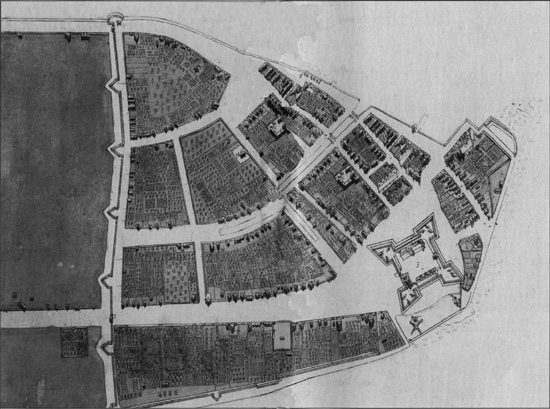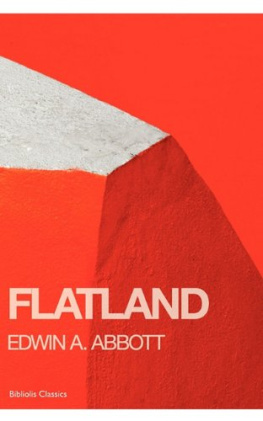Burrows Edwin G. - Gotham
Here you can read online Burrows Edwin G. - Gotham full text of the book (entire story) in english for free. Download pdf and epub, get meaning, cover and reviews about this ebook. year: 1999, publisher: Oxford University Press, Incorporated, genre: History. Description of the work, (preface) as well as reviews are available. Best literature library LitArk.com created for fans of good reading and offers a wide selection of genres:
Romance novel
Science fiction
Adventure
Detective
Science
History
Home and family
Prose
Art
Politics
Computer
Non-fiction
Religion
Business
Children
Humor
Choose a favorite category and find really read worthwhile books. Enjoy immersion in the world of imagination, feel the emotions of the characters or learn something new for yourself, make an fascinating discovery.

- Book:Gotham
- Author:
- Publisher:Oxford University Press, Incorporated
- Genre:
- Year:1999
- Rating:4 / 5
- Favourites:Add to favourites
- Your mark:
- 80
- 1
- 2
- 3
- 4
- 5
Gotham: summary, description and annotation
We offer to read an annotation, description, summary or preface (depends on what the author of the book "Gotham" wrote himself). If you haven't found the necessary information about the book — write in the comments, we will try to find it.
Gotham — read online for free the complete book (whole text) full work
Below is the text of the book, divided by pages. System saving the place of the last page read, allows you to conveniently read the book "Gotham" online for free, without having to search again every time where you left off. Put a bookmark, and you can go to the page where you finished reading at any time.
Font size:
Interval:
Bookmark:

Gotham
A History of New York City to 1898
Edwin G. Burrows
and
Mike Wallace


Oxford New York
Athens Auckland Bangkok Bogota Buenos Aires
Calcutta Cape Town Chennai Dares Salaam Delhi
Florence Hong Kong Istanbul Karachi Kuala Lumpur
Madrid Melbourne Mexico City Mumbai
Nairobi Paris Sao Paulo Shanghai Singapore
Taipei Tokyo Toronto Warsaw
and associated companies in
Berlin Ibadan
Copyright 1999 by Edwin G. Burrows and Mike Wallace
First published by Oxford University Press, Inc., 1999
198 Madison Avenue, New York, New York 10016
First issued as an Oxford University Press paperback, 2000
Oxford is a registered trademark of Oxford University Press
All rights reserved. No part of this publication may be reproduced, stored in a retrieval system, or transmitted, in any form or by any means, electronic, mechanical, photocopying, recording, or otherwise, without the prior permission of Oxford University Press.
Library of Congress Cataloging-in-Publication Data
Burrows, Edwin G., 1943
Gotham / Edwin G. Burrows and Mike Wallace.
p. cm.
Includes bibliographical references (p.) and index.
Contents: v. I. A history of New York City to 1898.
ISBN 0-19-511634-8 (Cloth)
ISBN 0-19-514049-4 (Pbk.)
I. New York (N.Y.)History. I. Wallace, Mike (Michael L.) II. Title.
F128.3.W35 1998 974.71dc21 97-39308
10 9 8 7 6 5 4
Printed in the United States of America
on acid-free paper
The origin of many a great city lies swaddled in myth and legend.
In Nepal, so the story goes, there was once a mountain valley filled with a turquoise lake, in the middle of which floated a thousand-petaled lotus flower. From it emanated a radiant blue lighta manifestation of the primordial Buddhaand the devout came from near and far to meditate upon the flower. At first they had to live in caves along the shore, but then the sage Manjushri flew down from the north and sliced through the southern valley wall with his flaming sword of wisdom, draining the lake and allowing the city of Kathmandu to rise upon the valley floor.
In Meso-America, according to another urban origin myth, the Aztecs departed their ancestral home and wandered south for centuries, searching for the sign priests had prophesied would reveal their new homeland. Finally, guided by Huitzilopochtli, the Hummingbird God, they reached Lake Texcoco, where, as foretold, an eagle perched on a cactus was devouring a serpent. There the Aztecs built Tenochtitln, the precursor of Mexico City.
Many European metropoles also traced their beginnings to wandering and divinely guided heroes. Aeneas, Virgil tells us in the Aeneid, led a group of Trojan War survivors to the mouth of the Tiber. There he founded Lavinium, parent town of Alba Longa, from whence Romulus and Remusoffspring of the war god Marswould later go forth to found the city of Rome. Londoners, too, long believed their metropolis had been established by a group of exiled Trojans and called their ur-London Trinovantum (New Troy). Lisbon, according to Portuguese tradition, was begun by Ulysses himself. The citizens of Athens were thus unusual in believing themselves autochthonoussprung, as Homer claimed in the Iliad, from the soil itself. Other cities, founded on the whim of the dice, are imported from other cities, the playwright Euripides had one of his characters say pridefully, but Athenians did not immigrate from some other place; we are born of our earth.
These origin stories celebrated the founding of urban civilizations as epic acts. Each narrative provided its city with a symbolic bedrock, conferring upon the citizenry a sense of legitimacy, purpose, identity. The cities Europeans built in the New World, however, were of too recent a vintage to allow for legendary beginnings, a fact Washington Irving bemoaned when he sat down to write A History of New York (1809). Irving regretted that his town was bereft of the imaginative associations which live like charms and spells about the cities of the old world, binding the heart of the native inhabitant to his home. Indeed Irving found New Yorkers sadly disconnected from their past; few of his fellow citizens cared a straw about their ancient Dutch progenitors or even knew the town had once been called New Amsterdam.
In the very opacity of Manhattans origin, however, Irving discerned a literary opportunity. Its annals were open, like the early and obscure days of ancient Rome, to all the embellishments of heroic fiction. Irving decided to portray his native city as having an antiquity thus extending back into the regions of doubt and fable. He would piece together a saga out of local memories and written records, supplemented with the workings of his lively imagination, and provide New York an epic pedigree, one that ran from the Beginning of the World to the End of the Dutch Dynasty.
In truth, Irvings History is a cheeky mock-epic, a potpourri of fact and fiction that plays knowingly and ironically with myth and history. Its invented narrator, the pedantic and pompous Diedrich Knickerbocker, envies his predecessors Dan Homer and Dan Virgil for being able to summon up waggish deities to descend to earth and play their pranks, upon its wondering inhabitants. So Knickerbocker spins a foundation story of his own, a takeoff on a tale Virgil tells in the Aeneid of how Queen Dido tricked Libyans out of the land on which she founded Carthage. The Dutch, Knickerbocker says, struck an adroit bargain with the local Indians by asking for just so much land as a man could cover with his nether garments, then producing Mynheer Ten Broeck (Mr. Ten Breeches) as the man whose underwear would be so deployed. The simple savages, Knickerbocker goes on, whose ideas of a mans nether garments had never expanded beyond the dimensions of a breech-clout, stared with astonishment and dismay as they beheld this bulbous-bottomed burgher peeled like an onion, and breeches after breeches spread forth over the land until they covered the actual site of this venerable city.
Irving had begun his efforts at coining a lineage for New York in the Salmagundi papers (1807), a set of sardonic essays, penned with two equally irreverent and youthful colleagues, in which he affixed the name Gotham to his city. Repeatedly Salmagundi referred to Manhattan as the antient city of Gotham, or the wonder loving city of Gotham. In the context of the piecesmocking commentaries on the mores of fashionable New Yorkersthe well-known name of Gotham served to underscore their depiction of Manhattan as a city of self-important and foolish people.
Gothamwhich in old Anglo-Saxon means Goats Townwas (and still is) a real village in the English county of Nottinghamshire, not far from Sherwood Forest. But Gotham was also a place of fable, its inhabitants proverbial for their folly. Every era singles out some location as a spawning ground of blockheadsPhrygians were accounted the dimwits of Asia, Thracians the dullards of ancient Greeceand in the Middle Ages Gotham was the butt of jokes about its simpleminded citizens, perhaps because the goat was considered a foolish animal.
The Gothamite canon, which had circulated orally since the twelfth century, was eventually printed up in jest books, the first being
Next pageFont size:
Interval:
Bookmark:
Similar books «Gotham»
Look at similar books to Gotham. We have selected literature similar in name and meaning in the hope of providing readers with more options to find new, interesting, not yet read works.
Discussion, reviews of the book Gotham and just readers' own opinions. Leave your comments, write what you think about the work, its meaning or the main characters. Specify what exactly you liked and what you didn't like, and why you think so.










